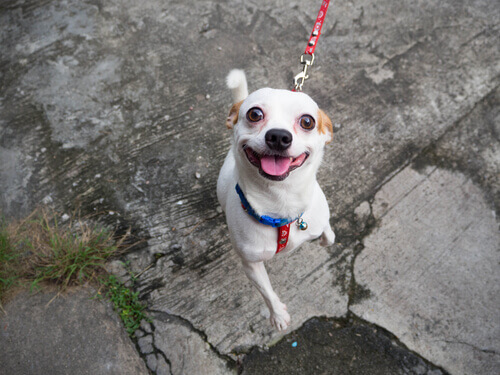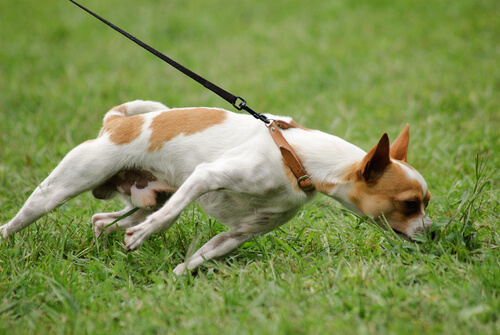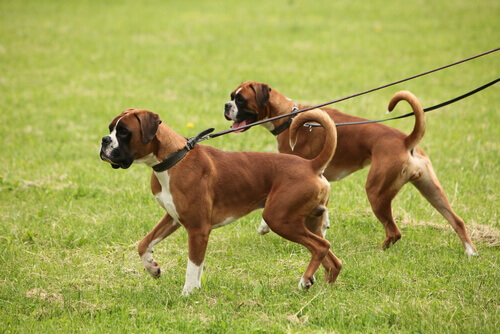Why Dogs Lose Interest in their Owners While on a Walk

Many dog owners agree that their dogs are very calm and obedient at home. However, as soon as they put one paw in the street, dogs often lose interest in their owners. In this article, we’ll be talking about all the key points you should know about this subject. Ready?
Why do some dogs lose interest in their owners when they get on the street?
The streets are an open space full of smells, noises, other people, dogs, vehicles, bicycles, etc. These are a big source of stimuli for a dog, especially if the pet doesn’t go out often. Under these conditions of nervousness and distraction, it’s difficult for the dog to concentrate and to listen to you.
Tips and advice for a good walk with your dog
When they’re calm, it’s easier to get their attention, and for the dog to practice sitting still in one place, answering our calls or remaining calm in the presence of other dogs and passers-by.

You can follow some of these tips if you want to try to avoid any stress and over-excitement when you take your dog for a walk:
Increase the duration or frequency of the walks according to the dog you have
There isn’t really a standard walk duration for all dogs. Therefore, the amount of time they need will depend on their size, age, and energy. The ideal routine is about three walks a day and one of them longer than the rest, where the dog has the freedom to explore and smell.
To this, we can add walks in the park, physical exercise, scent games at home, etc. Anything that will help them to move and release all that energy.
Improves your dog’s walking gear
Extremely short leashes (as usually used for large dogs) prevent the dog from lowering its head and sniffing the ground, making it impossible for the animal to relax and explore its environment. In addition, walking indefinitely with their owner exercises them physically but not mentally.
The dog has to be able to interact with the objects in their environment. The sense of smell is overdeveloped in these animals, therefore allowing them to smell and recognize objects is necessary for the animal’s emotional and mental stimulation.
The most recommended leashes to use are resistant ones made of nylon, around 9 to 16 feet long. With these, the dog can really enjoy the walk and relate to others of its kind without maintaining a constant tension. They’re specially made for open spaces like fields or parks.
If the walks have a specific destination such as the vet’s or simply along the city streets where there’s less space and more people, then you can use a 3 foot leash with which you can allow the dog some freedom of movement while you control the pace.
Practice calmness while outside
It’s equally important for a dog to stay calm indoors as well as outdoors. Obviously, if you’re outside then this becomes more challenging. Nevertheless, you can practice this gradually at the end of your walks when your dog has discharged its energy.
Simply sit with them in a quiet place and invite them to relax as if you were at home on the couch.
Little by little you’ll increase the amount of time that the animal is able to stay relaxed while being outside and prevent the dog from losing interest in you.

Train your dog inside the house and outside the house
By following the above tips and recommendations, you’ll be able to prevent the state of excitement and distraction that the street causes in your dog, and in time you’ll see that their behavior is less tense and you can successfully get their attention again.
A step further would be to practice training them outside the house as well, when the excitement levels have decreased. You can start with simple commands such as “sit” or “stay” and move on to more difficult ones. Remember to always use positive reinforcement and reward the animal when it follows your command.
It’s important that you continue to reinforce these actions over time so you don’t forget them. Learning should be a daily and fun activity.
Above all, a lot of patience is needed, since this process can take weeks or months. All changes are progressive and may be slow, but they can be a solution for dogs that lose interest in their owners while out for a walk.
However, if you consider that professional help is needed, you can always turn to a dog trainer to solve any behavioral problems your dog may have.
All cited sources were thoroughly reviewed by our team to ensure their quality, reliability, currency, and validity. The bibliography of this article was considered reliable and of academic or scientific accuracy.
- Habla con ellos. Educación y Adiestramiento Canino.
- Wakyma. Mi perro no me hace caso, ¿qué puedo hacer?
- Wakyma. Problemas en el adiestramiento de perros.